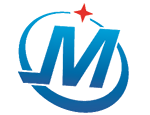Malleable iron pipe fittings are widely used in plumbing, fire protection, and industrial piping systems due to their strength, durability, and ease of installation. Among these fittings, the **three-dimensional tee (3D tee)** is a specialized component designed to optimize complex pipe routing. This article provides a detailed introduction to the 3D tee, covering its structure, advantages, applications, and installation considerations.
1. What is a 3D Tee?
A three-dimensional tee (also called an offset tee or multi-plane tee) is a type of malleable iron pipe fitting that allows piping connections in three different directions, unlike a standard tee that only connects pipes in a straight line (90° branches).
- Design: It features three outlets positioned at varying angles (e.g., 45°, 90°, or custom angles) to facilitate pipe routing in tight or irregular spaces.
- Material: Typically made from **malleable cast iron** (ductile iron in some cases), ensuring high strength and corrosion resistance.
- Finishes: Often galvanized or epoxy-coated for enhanced durability.
2. Key Advantages of 3D Tees
Compared to standard tees, 3D tees offer several benefits:
① Space Efficiency
- Allows piping systems to navigate around obstacles (beams, ducts, or other pipes) without requiring additional elbows or offsets.
- Reduces the need for complex pipe bending or welding.
② Reduced Pressure Drop
- Smoother flow transition compared to multiple elbows, minimizing turbulence and energy loss.
③ Simplified Installation
- Eliminates the need for multiple fittings, reducing potential leak points.
- Saves labor time in tight or congested areas.
④ Structural Integrity
- Malleable iron construction ensures high pressure and temperature resistance.
- Suitable for both **threaded and grooved** connection systems.
3. Common Applications
3D tees are used in various industries where efficient pipe routing is essential:
① Fire Protection Systems
- Used in sprinkler systems to navigate around structural elements while maintaining optimal water flow.
② HVAC & Plumbing
- Helps route pipes in **ceiling spaces, mechanical rooms, and underground systems where space is limited.
③ Industrial Piping
- Common in chemical plants, oil & gas pipelines, and power generation facilities where complex pipe layouts are required.
④ Shipbuilding & Offshore Platforms
- Used in marine piping systems due to their compact design and corrosion-resistant coatings.
4. Installation Considerations
Proper installation ensures optimal performance and longevity:
① Alignment & Support
- Pipes must be properly aligned to avoid stress on the fitting.
- Use hangers or braces to prevent vibration-induced leaks.
② Thread Sealant & Gaskets
- Apply PTFE tape or pipe dope on threaded connections to prevent leaks.
- For grooved systems, ensure proper gasket seating before tightening couplings.
③ Pressure & Temperature Limits
- Verify the fitting’s pressure rating(typically Class 150 or 300) before installation.
- Avoid exceeding maximum temperature limits** (usually up to **250°C / 482°F** for standard malleable iron).
④ Inspection & Maintenance
- Regularly check for corrosion, cracks, or leaks, especially in harsh environments.
- Replace damaged gaskets or corroded fittings promptly.
6. Conclusion
The three-dimensional tee (3D tee)is a highly efficient malleable iron pipe fitting that simplifies complex piping layouts while maintaining structural integrity. Its ability to connect pipes in multiple planes makes it indispensable in fire protection, HVAC, industrial systems, and marine applications. By reducing installation time, minimizing pressure drops, and improving space utilization, 3D tees offer a cost-effective solution for modern piping challenges.
Post time: May-28-2025
